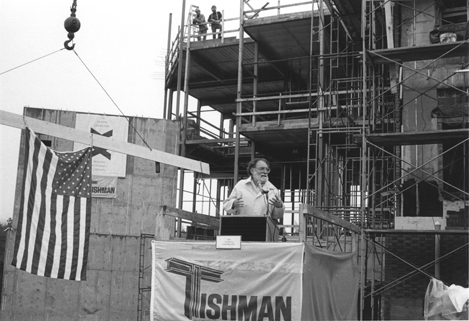
Faculty Research 1990 - 1999
Introduction of the human PLTP transgene suppresses the atherogenic diet-induced increase in plasma phospholipid transfer activity in C57BL/6 mice.
Document Type
Article
Publication Date
1999
Keywords
Carrier-Proteins: bl, ge, Diet-Atherogenic, DNA-Probes, Female, Gene-Expression, Human, Lipoproteins-HDL-Cholesterol, Male, Membrane-Proteins: bl, ge, Mice, Mice-Inbred-C57BL, Mice-Transgenic, Phospholipids: bl, ge, RNA-Messenger: an, SUPPORT-U-S-GOVT-P-H-S, Transgenes: ph
First Page
14
Last Page
21
JAX Source
Int J Clin Lab Res 1999;29(1):14-21
Grant
HL30086/HL/NHLBI, HL32087/HL/NHLBI
Abstract
The human plasma phospholipid transfer protein (PLTP) has been shown to facilitate the transfer of phospholipids between lipoproteins and convert high-density lipoproteins into larger and smaller particles in vitro. To explore the lipid transport function in vivo, transgenic C57BL/6 mice that express the human PLTP gene, driven by its natural promoter, were generated. Little difference in PLTP activity and lipoprotein lipids was observed between transgenic mice and non-transgenic control mice fed the chow diet. In response to an atherogenic high-fat, high-cholesterol, cholic acid containing diet, the PLTP activity increased significantly with time in control mice (62% in males and 34% in females after the high-fat diet for 18 weeks). In contrast, the PLTP activity did not change appreciably in the transgenic mice fed the atherogenic diet. Thus, the introduction of the human transgene suppressed the diet-induced increase in plasma PLTP activity, as evidenced by a decrease in PLTP mRNA in a variety of tissues. High-density lipoprotein levels decreased in mice fed the atherogenic diet, but there was a proportionally greater decrease in transgenic animals than in controls. After 18 weeks on the atherogenic diet, the transgenic animals had high-density lipoprotein-cholesterol and PLTP activity approximately one-half of that of control animals. Non-denaturing gradient gel electrophoresis of plasma indicated that the atherogenic diet decreased the high-density lipoprotein size distribution in control mice. However, high-density lipoprotein particle size distribution of the transgenic mice was shifted to smaller particles compared with control animals (P < 0.001). These findings suggest that PLTP activity can modulate the effects of an atherogenic diet on high-density lipoproteins.
Recommended Citation
Tu AY,
Paigen B,
Wolfbauer G,
Cheung MC,
Kennedy H,
Chen H,
Albers JJ.
Introduction of the human PLTP transgene suppresses the atherogenic diet-induced increase in plasma phospholipid transfer activity in C57BL/6 mice. Int J Clin Lab Res 1999;29(1):14-21

